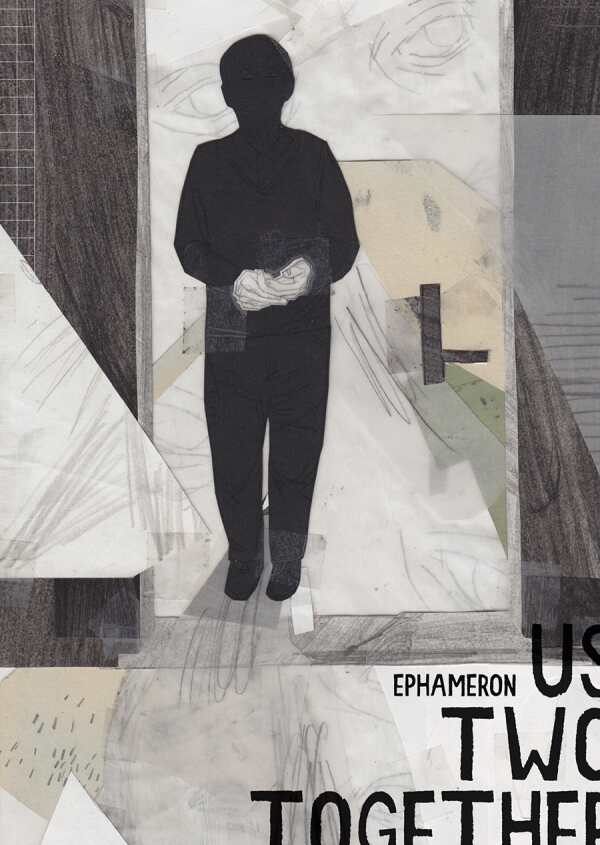Us Two Together
Ephameron’s poignant graphic novel Us Two Together portrays the slow decline of her father as illness robbed him of the ability to communicate.
A rare form of early-onset progressive dementia struck the subject when he was fifty-eight years old. The book aims to convey his experiences and those of his family in an unusual blend of graphics and words. Small, typeset text represents Ephameron’s voice; her father’s handwritten, graph-paper notes are recreated; the sounds her father makes are captured in yet another font. Combined with hand-drawn images and white space, words emphasize, contrast, and complement the images. Deliberate and thoughtful in its composition, the book provides a full emotional vocabulary to tell its tale.
Though daring, this is not an easy book to read. There’s little or no text on most pages, and it’s tempting to skim through the contents, but the illustrations require a slower pace of absorption if they are to be understood and appreciated. Instead of traditional storytelling, Ephameron uses accumulations of images to build toward a deeper comprehension of the situation or feeling. At times, it can be difficult to determine what is being depicted, but the overarching effect is undiminished.
The book is affecting when declaring “now that the father has become the child,” as it is when Ephameron’s father scribbles “Help me;” the final drawing of his still hand makes for a moving ending. Us Two Together shares an experience no one would wish to duplicate, but one that has meaning and lessons for all.
Reviewed by
Peter Dabbene
Disclosure: This article is not an endorsement, but a review. The publisher of this book provided free copies of the book to have their book reviewed by a professional reviewer. No fee was paid by the publisher for this review. Foreword Reviews only recommends books that we love. Foreword Magazine, Inc. is disclosing this in accordance with the Federal Trade Commission’s 16 CFR, Part 255.

